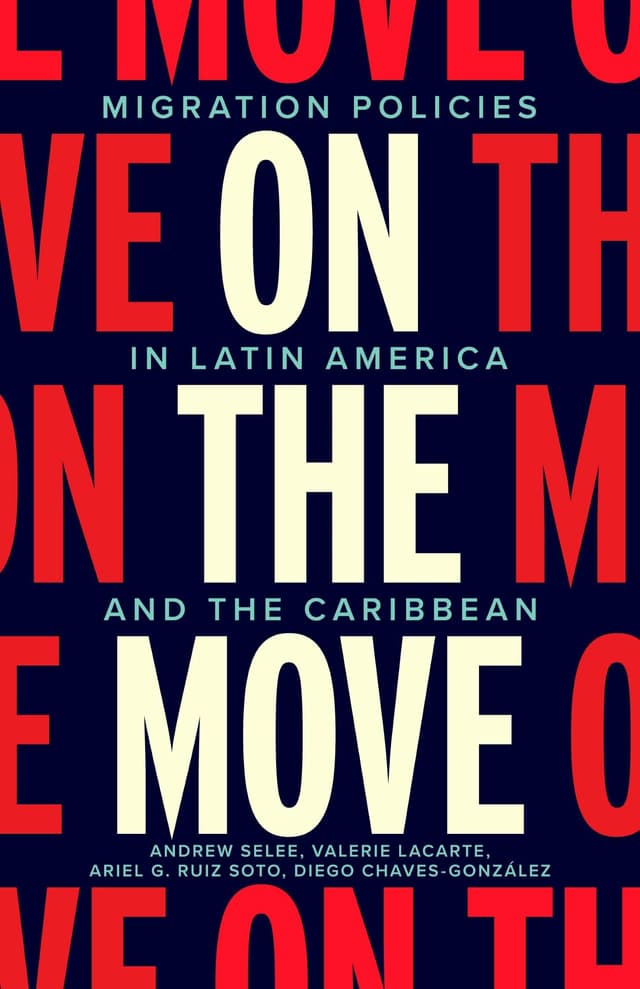| | | | By Rebecca Dasema and Jeanne Batalova Central Americans comprise one of the fastest-growing immigrant groups in the United States, and now account for nearly one in every ten immigrants. Most Central American immigrants come from either El Salvador, Guatemala, or Honduras. Notably large shares are in the labor force, arrived since 2010, or lack legal status. This article provides current and historical information about this group. |
| |
|
| |
|
| | Por Rebecca Dasema y Jeanne Batalova Las personas de América Central representan casi uno de cada diez inmigrantes en los Estados Unidos, una población en rápido crecimiento. La mayoría de los inmigrantes centroamericanos provienen de El Salvador, Guatemala o Honduras. Este artículo proporciona información sobre la población inmigrante centroamericana en los Estados Unidos. |
| |
|
| |
|
| | By Nicola De Martini Ugolotti and Zahra Termeh Eskandari Many countries have sought to encourage immigrants’ participation in sports as a pathway to integration. These efforts have followed broader social policy shifts and evolved as policymakers have reconsidered the process of integration. This article examines how sports programming has been used to aid newcomers' settlement in their communities. |
| |
|
| |
|
| | Nearly 50,000 people have had their Kuwaiti citizenship revoked over the last year, in an unprecedented move that complicates the region’s evolving posture towards immigration. The revocations, which are the result of 2024 changes to restrict naturalization through law and government decree, are notable given that there are only about 1.5 million Kuwaiti citizens overall. Like many Gulf countries, Kuwait has long had a foreign-born population that well outnumbers the native born. Immigrants accounted for about two-thirds of Kuwait’s population in 2024, a larger share than all but a handful of countries worldwide. While foreign-born residents have typically been subjected to numerous restrictions, Kuwait and other regional governments in the Gulf Cooperation Council had started to re-evaluate their approaches, with an eye on pivoting their oil-based economies to the future. In that light, the recent citizenship revocations seem to represent a step backwards. Kuwait’s ruler, Emir Sheikh Mishal Al-Ahmad Al-Sabah, rose to power in 2023 and last year suspended Parliament to “not permit for democracy to be exploited to destroy the state.” Soon afterward, the government began its denaturalization campaign, claiming to be targeting people who naturalized illegally. Many of those who have lost their Kuwaiti citizenship are foreign-born women who had married Kuwaiti men, sometimes decades ago. Also targeted were celebrities such as actor Dawood Hussain and singer Nawal Al Kuwaitia. In addition to a rollback of democratic norms, the citizenship revocations may also be interpreted as a sign of concern about Kuwait’s economic outlook, given that losing citizenship also means becoming ineligible for the generous government subsidies and benefits. Still, Kuwait is not the only country that has sought to roll back citizenship rights in recent months. In July, Cambodian lawmakers amended the constitution to allow for individuals to be stripped of their citizenship for colluding with foreign powers, following criticism from political opponents about the country’s recent border dispute with Thailand. In the United States, the Trump administration has said it will prioritize denaturalizing certain immigrants, including over national security grounds, though allies have also mused about doing so against perceived political enemies—as has been alleged by critics of the Kuwaiti denaturalization campaign. In all, the trends suggest that, in some countries, citizenship and legal residence rights may be more fragile statuses than they seem at first. Earlier this month, France’s interior minister stripped the residence rights of a Moroccan immigrant who infuriated many by lighting his cigarette with the eternal flame at the Unknown Soldier War Memorial in Paris. |
|  | On a very different note, we at MPI this month are celebrating our colleagues who are publishing a new book on August 26 through Stanford University Press. In On the Move: Migration Policies in Latin America and the Caribbean, Andrew Selee, Valerie Lacarte, Ariel G. Ruiz Soto, and Diego Chaves-González provide a comprehensive look at how Latin American and Caribbean countries have responded to an unprecedented era of migration within and beyond the region. The book is the product of years of research, and provides detail on the historic increase in migration across the region. While migration northward to the United States has dominated headlines in recent years, the book takes note of the even more remarkable amount of movement elsewhere in the Western hemisphere—and the often pragmatic and innovative policy responses by countries in the region. I hope you will join us in celebrating their accomplishment (and to do so, Stanford University Press is offering a 20 percent discount for pre-orders: Use code MOVE20). All the best, Julian Hattem
Editor, Migration Information Source
[email protected] |
| |
|
| | | "Origin states have political, economic, and cultural reasons not to accept their returning nationals." |
| | |
|
"By using ancient laws with roots in wartime and other security authorities, sometimes stretching back centuries, the Trump administration has tapped into vast powers never previously used for routine immigration enforcement." |
| | |
|
"Peru’s significant numbers of Chinese and, to a lesser extent, Japanese immigrants are a legacy of an era that began in the 1850s." |
| | |
|
| | | The Migration Information Source is a publication of the Migration Policy Institute, a nonpartisan, nonprofit think tank in Washington, DC, and is dedicated to providing fresh thought, authoritative data, and global analysis of international migration and refugee trends. |
|
|
| | Copyright © 2025 Migration Policy Institute. All Rights Reserved.
1275 K St. NW, Suite 800, Washington, DC xxxxxx |
|
|
| |
|
|